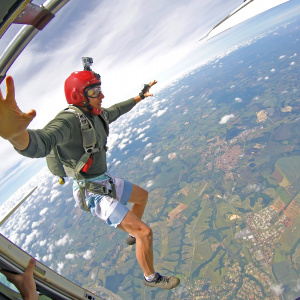
As professional market researchers and Insight analysts we are all motivated by a desire to learn more about consumers.
However there is no point is in doing any research or analysis in a corporate Insight team unless it prompts our colleagues to do something differently.
And whether insights drive action depends at least as much on how they are communicated as on the quality of the insights themselves.
As one Insight director said at a meeting of the IMA’s Insight Forum many years ago, a great insight badly communicated sinks without trace, whilst a good insight brilliantly communicated will spread like wildfire.
Are Insight teams good at communication?
Looking at the most recent set of IMA benchmarking data, it is clear that most Insight leaders still consider their teams better at generating new insights than communicating them.
It’s not surprising then that the number one training request we receive at the IMA is to help teams improve the way they share insights, whether through storytelling, data visualisation or SCQAB - the management consultants’ approach to effective communication.
Recent research by Vox Pops International emphasised the same theme. When asked what they considered their biggest challenge as market researchers:
- 52% said it was ‘increasing company engagement’
- 42% said it was storytelling
- 40% said ‘making research digestible’
So what do the most effective Insight teams do?
Improving Insight communications with video
Vox Pops International organised a free conference for 150 Insight professionals in London yesterday, chaired by the IMA’s James Wycherley. The event focused on the increasingly creative use of video by some of the top corporate Insight teams.
The highlights included:
Sky’s Insight team have used a mixture of video, sound showers and real customers’ artefacts to bring some key customer personas into their head office in Osterley. Developed as part of their brand strategy work, the way they have brought their customer segments to life has transformed senior management’s understanding of normal customers.
Sarah Jousiffe, Sky’s Head of Qual, Closeness and Insight Engagement, explained that they are always on a journey of experimentation with their Insight communication, but their natural bias was ‘to do things visually at Sky’.
Unilever’s Insight team have created an extensive portal of daily consumer videos. These span multiple countries, brands and issues, and give category managers in every division a consistent view of consumers’ perspectives, invaluable for new proposition development.
Highways England have also created an Insight Hub comprising videos and a series of animations. These don’t just focus on new insights; critically they convey core stats and key truths derived from many pieces of market research.
It takes a lot of time and effort to aggregate findings and paint big pictures like this, but organisations struggle to act consistently without Insight communications that summarise key aspects of consumer behaviour and its drivers.
Diane Earnshaw also spoke about Vox Pops International’s new automated animations which help to bring dashboards to life, and recent developments in 360 degree video. These use virtual reality headsets to allow decision makers to really step into a customer’s world.
Good communications have wider benefits for Insight teams
Summing up, James Wycherley stressed the role that video was playing not only in communicating insight in a compelling way, but also in improving some Insight teams’ internal brand and reputation. This is so important because it makes it more likely that Insight will be invited to contribute to bigger projects in future.
Being seen as the team that produces compelling content which drives action is great for our sense of job satisfaction. But it also drastically improves the chances that the new insights we discover today will find a receptive audience tomorrow.
